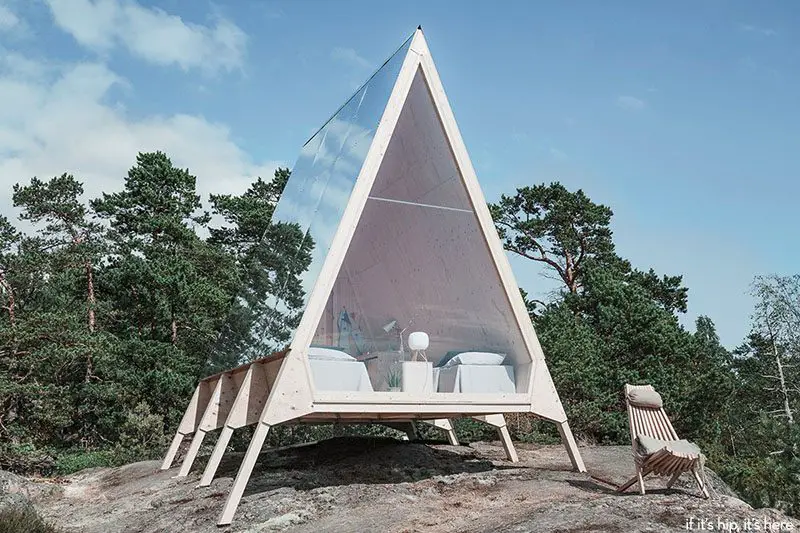The Neste Nolla Cabin is an A-frame mobile cabin built from sustainable materials and designed to have minimal environmental impact in terms of both carbon dioxide emissions and concrete impact on nature. The prototype is located on a Finnish Island and is available to book through Airbnb for a limited time!
Neste Nolla Cabin
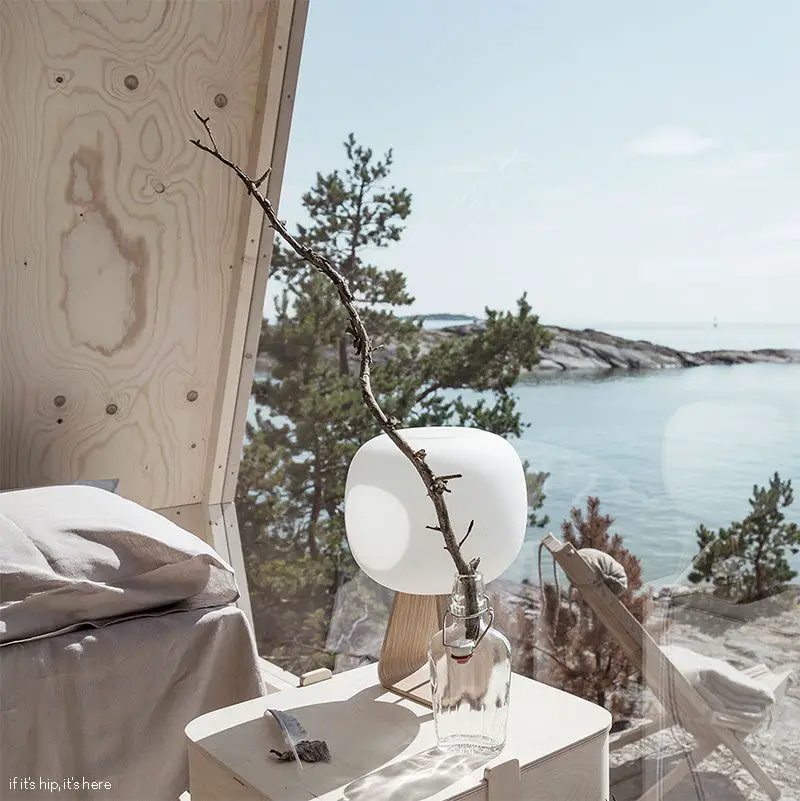
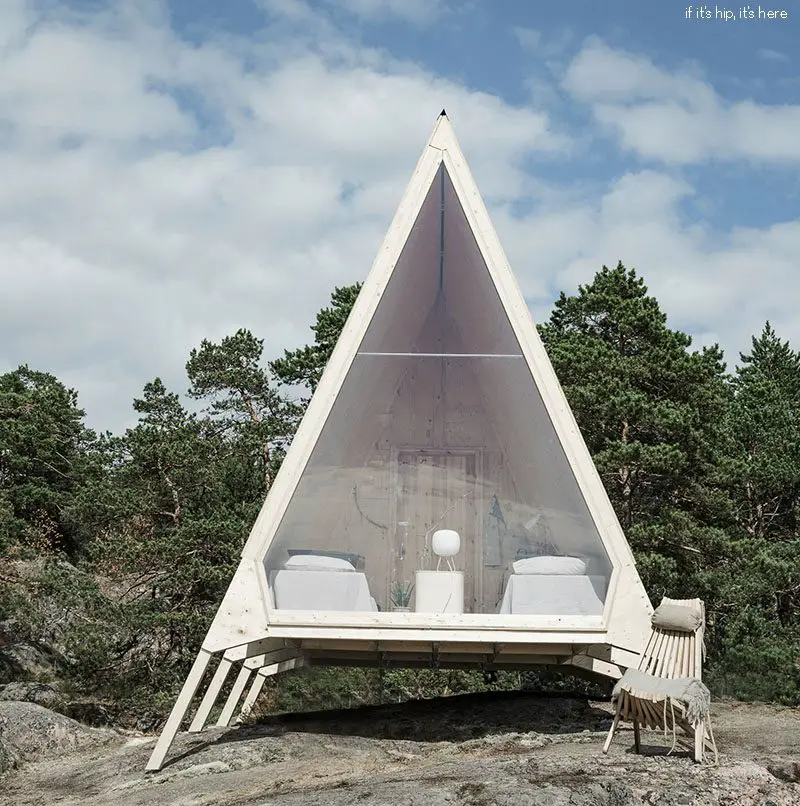
The Nolla (= zero) cabin, designed by Finnish designer Robin Falck, is located just outside Helsinki city center, on the Vallisaari island.
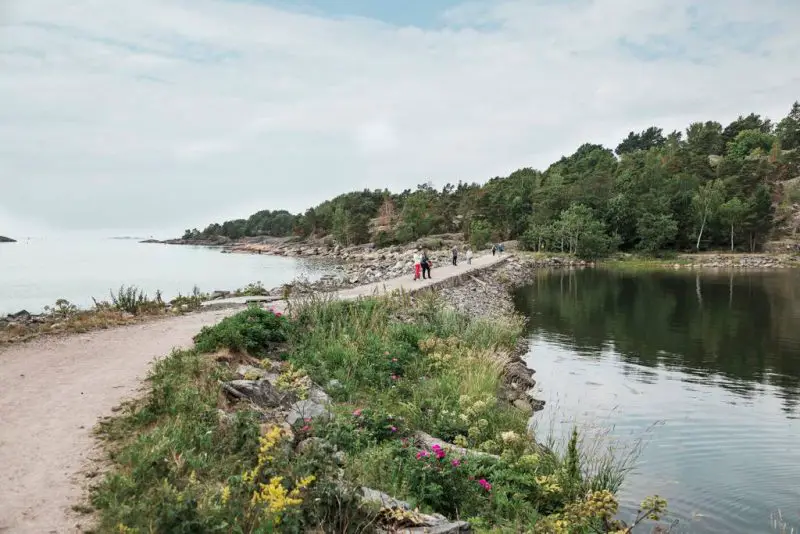
The cabin is the size of small bedroom, with two camping beds and a stunning view into the archipelago. The cabin has been built from sustainable materials and is designed for a simple lifestyle with minimal to no emissions, taking into account the surrounding nature in every respect.
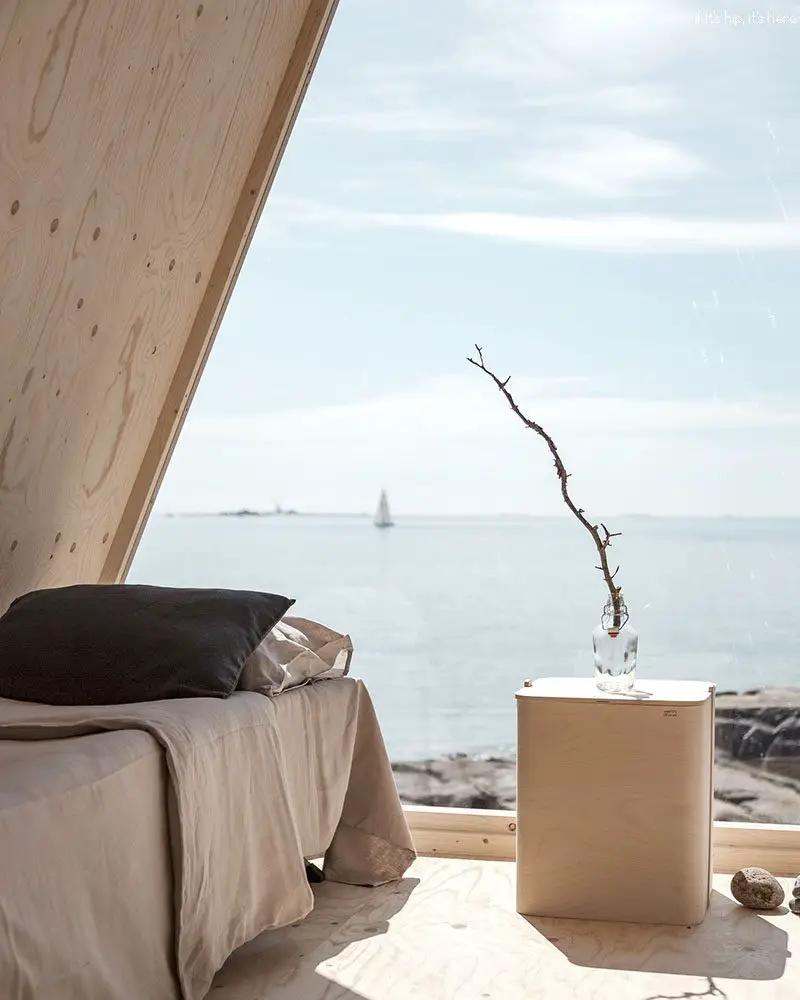
The cabin features textiles made of ecological materials such as linen, jute and bamboo, and accessories made of Scandinavian wood. The Bagassi tableware is manufactured from a residue fibre of the cane sugar production process, and will decompose in a few weeks within a compost.
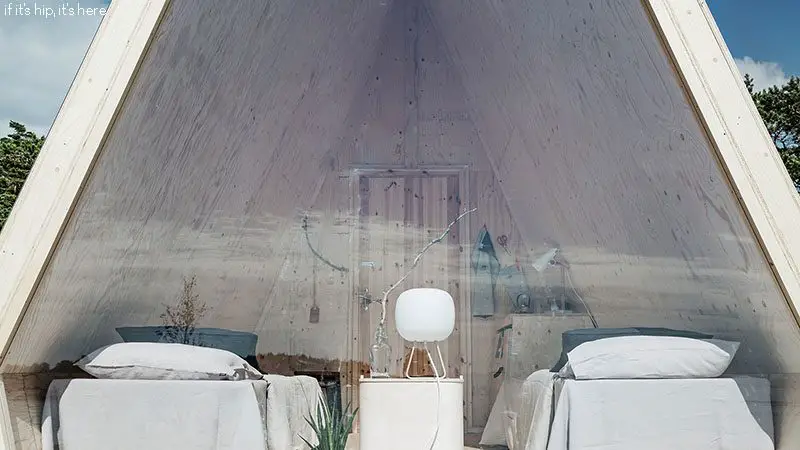
To ensure the effective use of building materials and to decrease cut waste, the dimensions of the cabin were also designed to match the standard measurements of the chosen material, a Finnish plywood product Kerto LVL. A simplified version of the cabin could have been built entirely from recycled materials, but using local timber was a conscious decision to ensure both comfort and durability. Kerto LVL is a naturally sustainable product, because wood acts as a carbon sink throughout its life cycle.
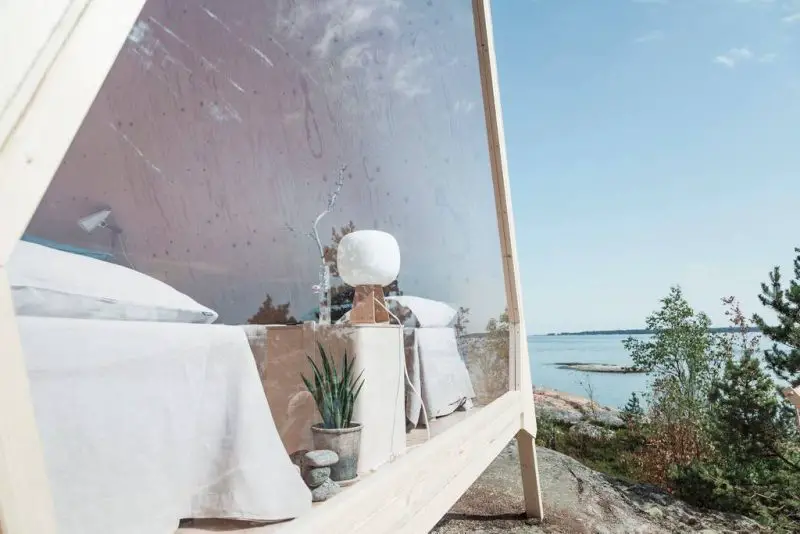
The design of the cabin, as well as the “paws” that uphold it, make it easy to transport and assemble. Transportation does not require any heavy machinery and due to its adjustable paws, the cabin can be erected without leaving any traces on the ground. Both of these features make it an ideal design for delicate environments, where groundwork cannot be done, and leaving a minimal trace in the surroundings is key.
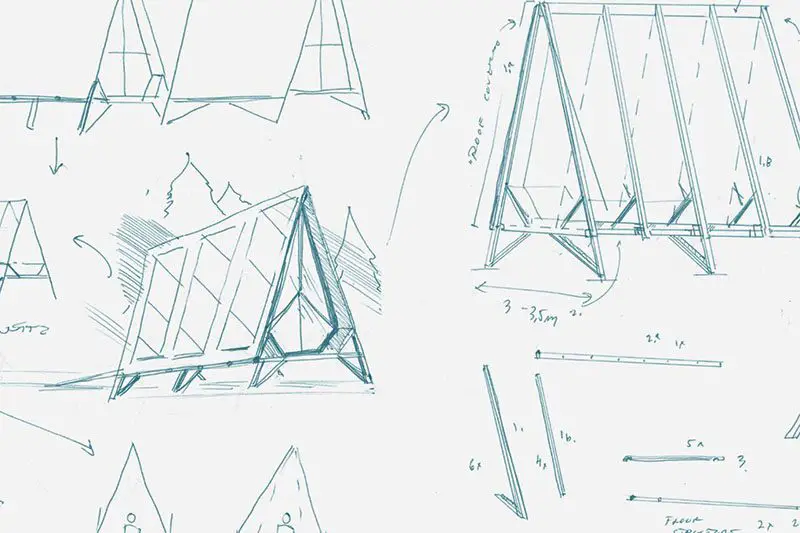
A mirrored surface on one side of the roof reflects heat and helps create a cool space inside. This feature could have been removed in order to make the cabin even more sustainable, but as the cabin is located on a sunny cliff in Vallisaari, every feature that helps prevent overheating was found necessary.
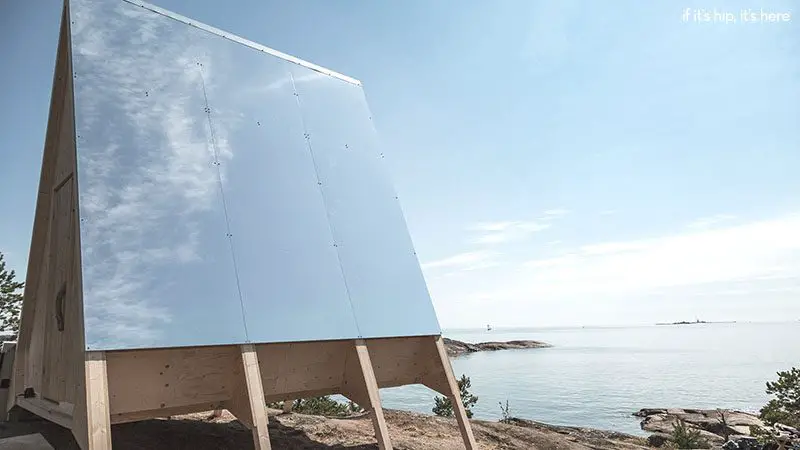
For safety reasons, the eye-catching, triangle-shaped window of the cabin is made out of polycarbonate. Neste is already able to offer renewable feedstock for the production of polycarbonate, instead of fossil crude oil based feedstock, and manufacturing bio-based polycarbonate plastic could be possible in the future, when there is enough demand for larger volumes.
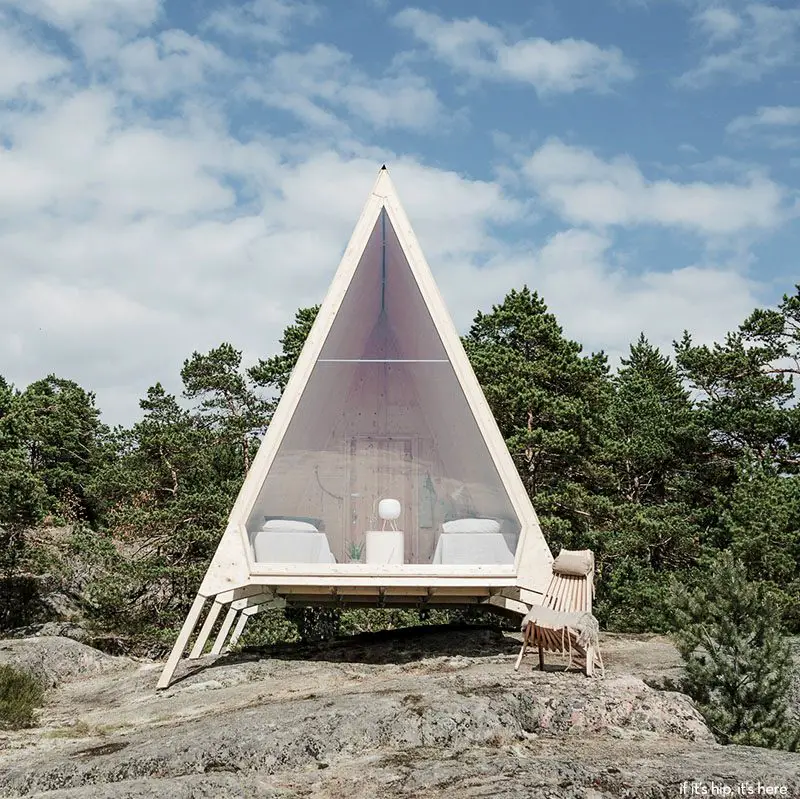
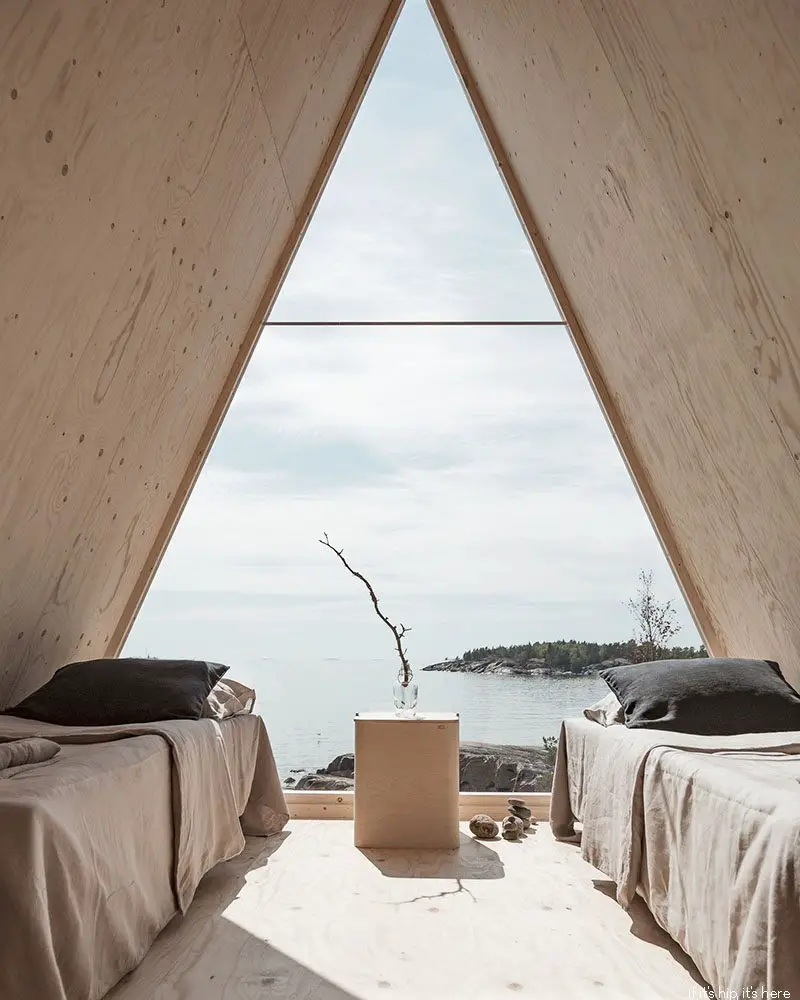
The energy supply of the cabin is derived from renewable energy sources, making it entirely fossil-free. Solar panels are installed on one side of the roof, and a small stove by Wallas, reserved for cooking and heating, runs entirely on Neste MY Renewable Diesel.
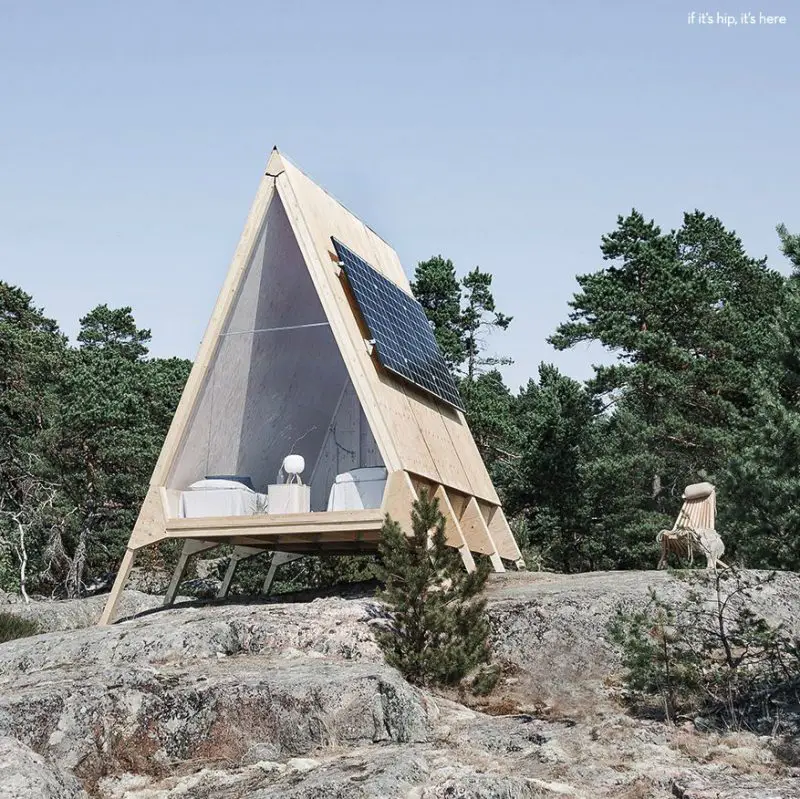
The sustainable and completely emission-free solar panels were a natural and ideal choice for the Nolla cabin, located on a sunny cliff in Vallisaari. The solar panels are installed on the northwest side of the roof to ensure effective exposure to the sun and therefore a maximal energy production. The panels do not generate noise, pollution or burden their surroundings in any other way. This is especially important as the cabin is located in a delicate and diverse natural habitat.
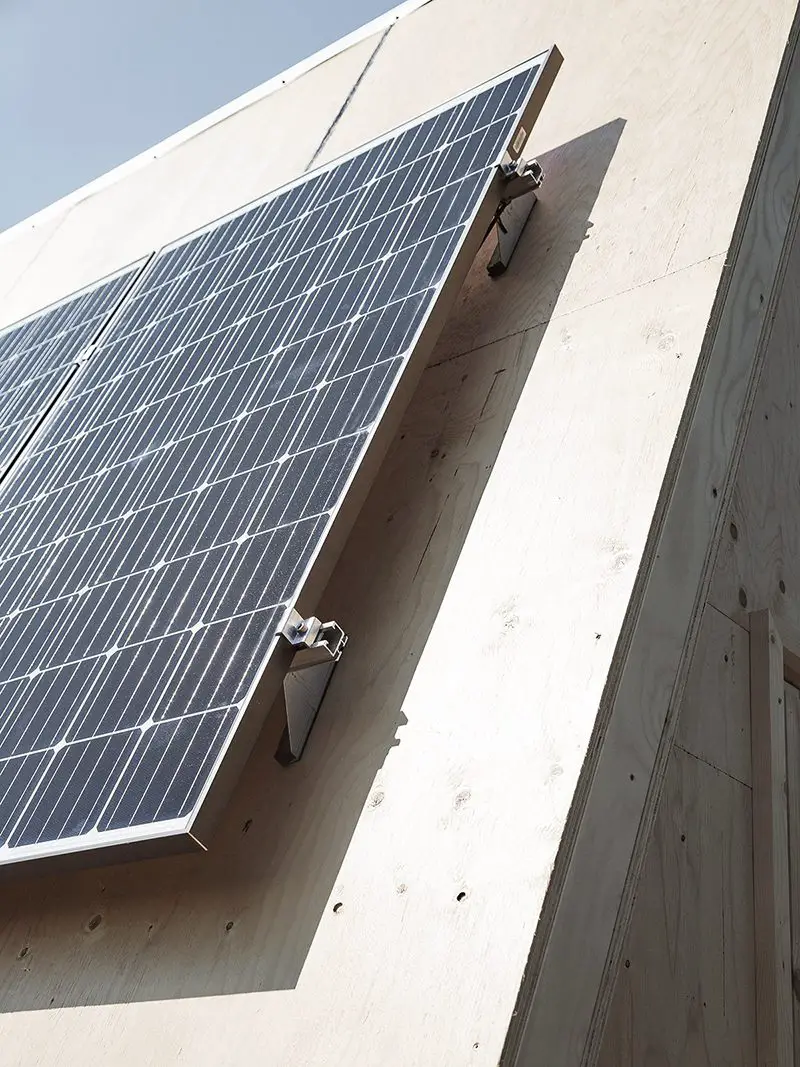
As creating open fire is strictly forbidden in Vallisaari, a sustainable solution for cooking had to be devised for the cabin. A Wallas stove, designed for sailing purposes proved the optimal solution for a cabin that has both a limited electricity supply and little space.
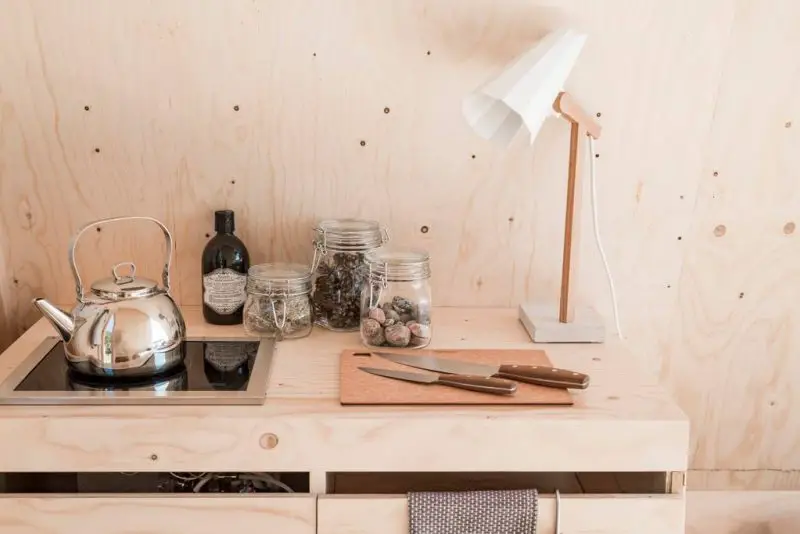
The stove runs on Neste MY Renewable Diesel, which is produced entirely from waste and residue and decreases greenhouse gas emissions by up to 90%. The stove can also be utilized for heating the cabin.
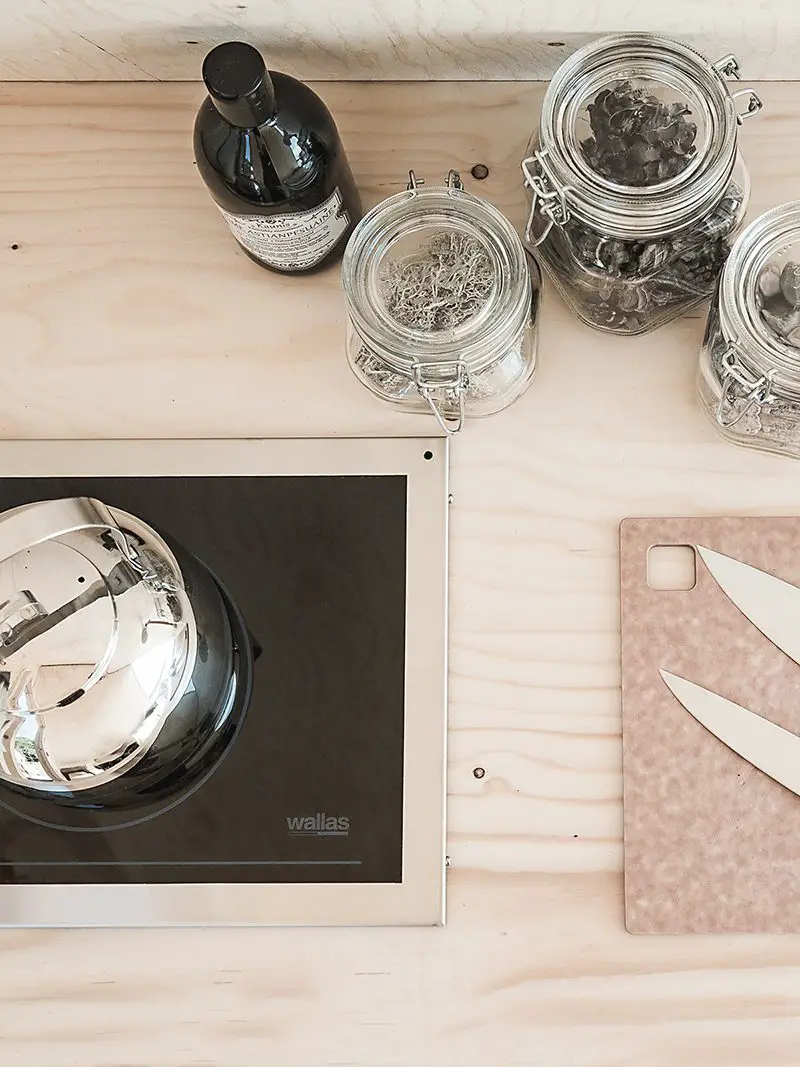
Several products chosen for the Nolla cabin from the Stockmann Sustainable Collection have been made out of recycled or surplus materials. The canvas bags reserved for carrying groceries and water containers have been produced by Globe Hope, who make their products out of textile industry surplus and cut waste. At least 70% of the materials used to manufacture Fiskars kettles are recycled from old kettles and pans.
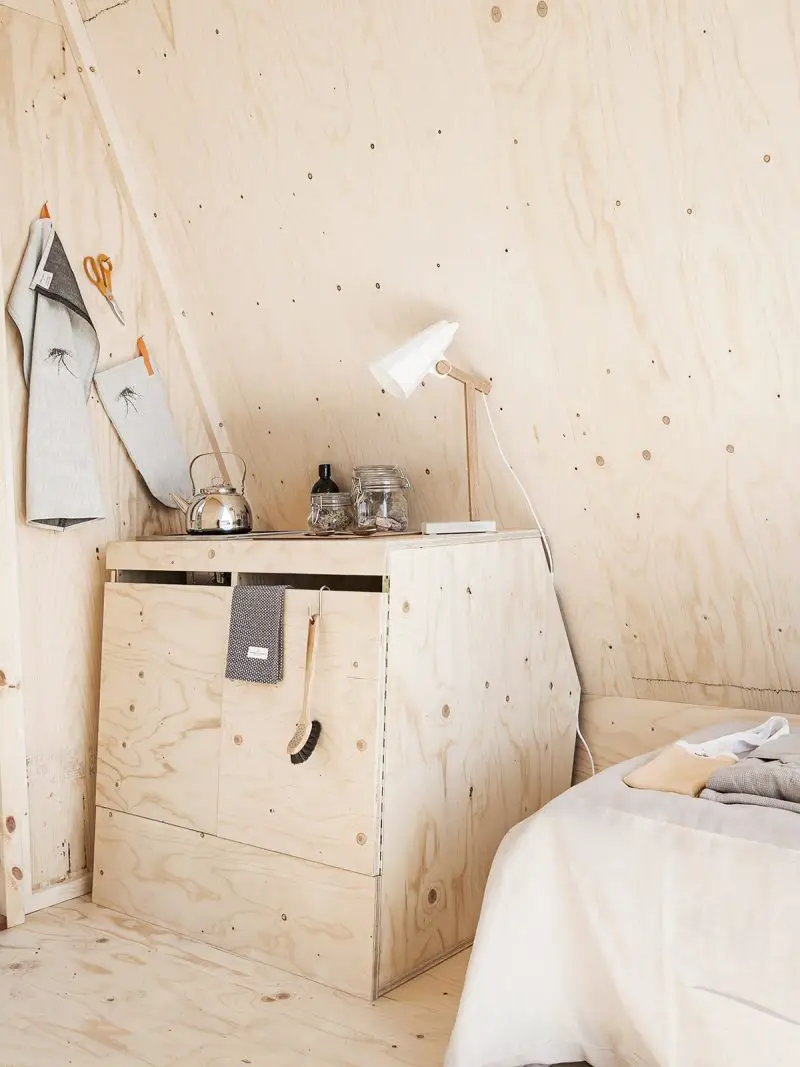
Located on the idyllic island of Vallisaari in the Helsinki archipelago, the Nolla cabin encourages people to consider how modern solutions and innovations could enable sustainable cabin living.
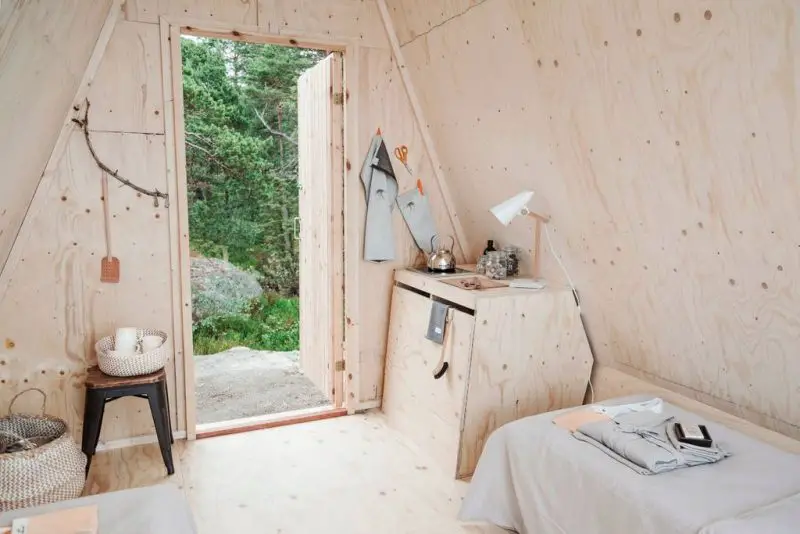
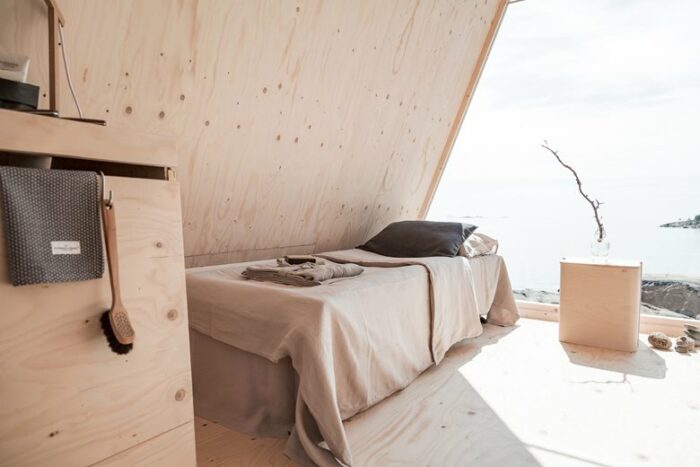
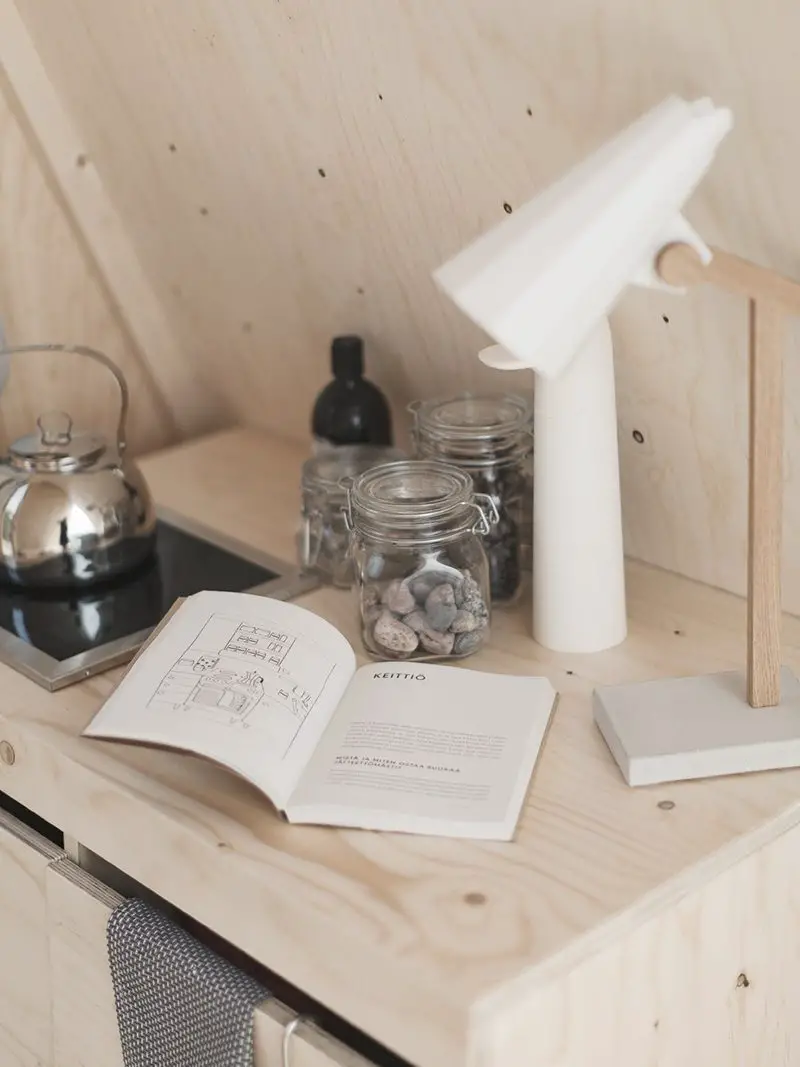
Vallisaari has been in a natural state for decades and is thus the perfect location for an urban cabin experience, located at a 20-minute boat ride away from the Helsinki market square. The ecological and mobile Nolla cabin will be in Vallisaari until the end of September, demonstrating a lifestyle that generates minimal to no emissions. The Aava Lines raft operating between Helsinki city centre and Vallisaari will also run on Neste MY Renewable diesel that can reduce greenhouse gas emissions by up to 90%.
Placing the compact and mobile cabin on its private lot does not require a construction permit and it has been designed to use building materials as effectively as possible. The cabin is the size of a small bedroom and can be assembled and transported without heavy machinery, leaving its environment nearly untouched. The Nolla cabin has been designed by Finnish designer Robin Falck, whose earlier design, Nido cabin, has been globally acknowledged.
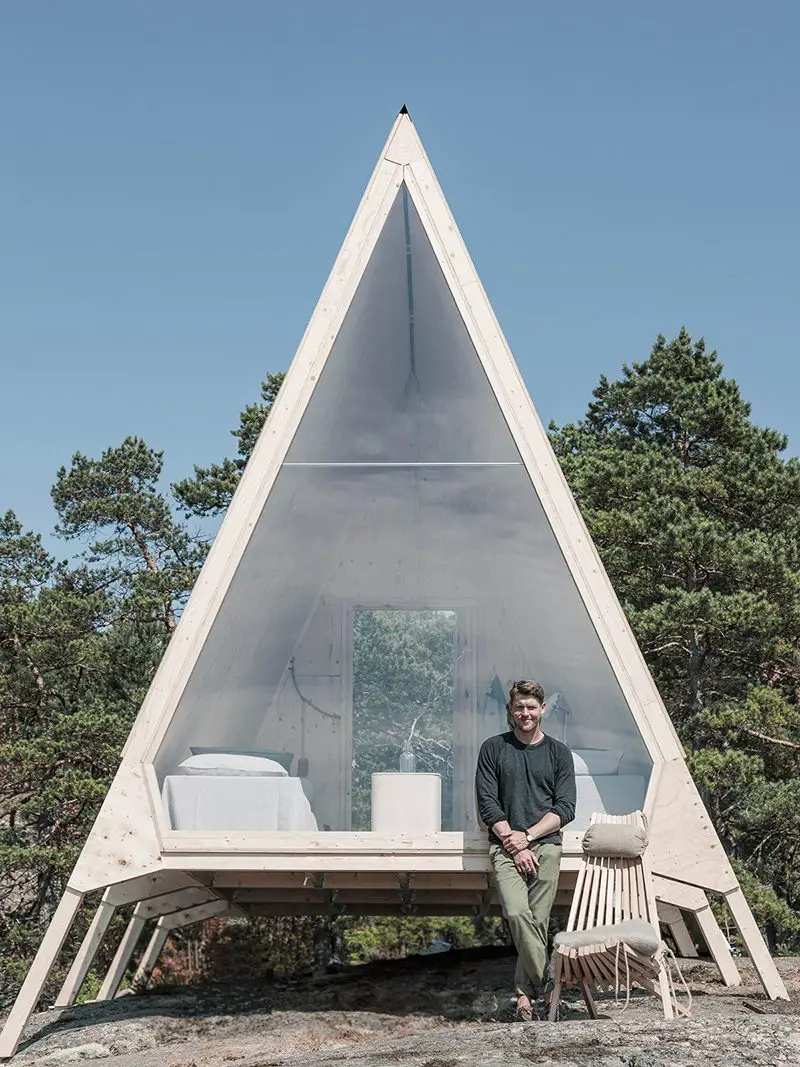
“With the Nolla cabin, we want to offer visitors the possibility to experience modern cabin life in the realm of nature, with minimal emissions. An ecological lifestyle does not only require giving up unsustainable commodities, but also discovering modern, sustainable solutions that can be used instead. This has been an essential part of the design process”, says Falck.
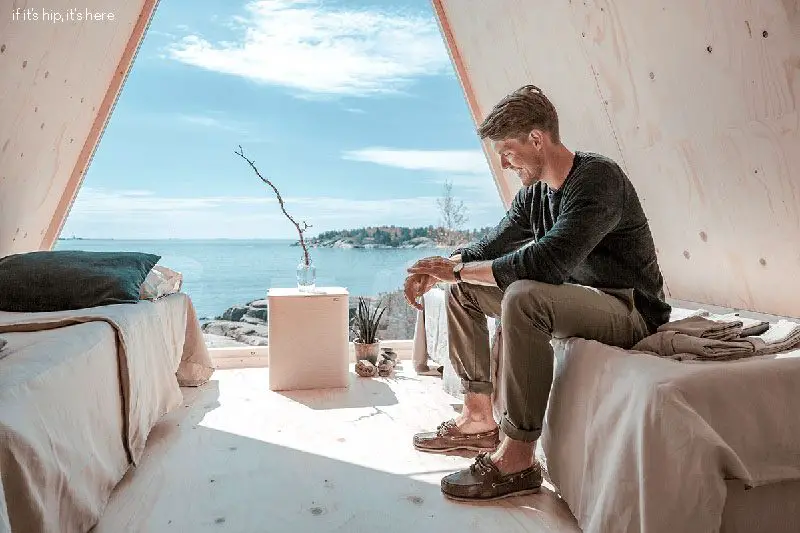
“Finns are known for spending time at their beloved summer houses. We wanted to explore sustainable solutions that could enable cabin life with minimal emissions. Shared and circular economy, as well as new technologies and innovations have made it possible to enjoy our cabins without harming or burdening the environment. Some of the solutions that have been used at the Nolla cabin are perfectly adaptable at any cabin”, says Sirpa Tuomi, Marketing Director at Neste.
The Nolla Cabin specs
Designer: Robin Falck
Dimensions: Height 4m, width 3,75m
Materials: main material plywood, the floor has been coated with a non-toxic, water-soluble varnish
Energy supply: Fortum solar panels
Heating: Fortum solar panels, Wallas, Neste MY Renewable Diesel
Weight: 900 kg
Interior Decor: Stockmann Sustainable Collection
The Nolla cabin is available for booking through Airbnb
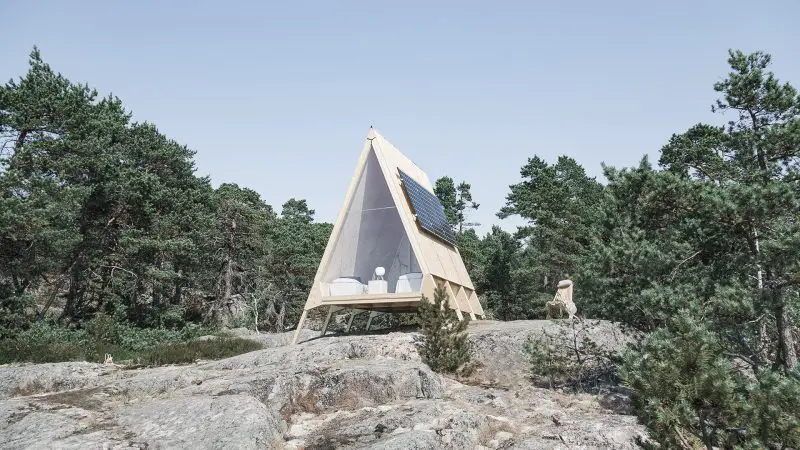
To give an even wider audience the chance to experience cabin life with minimal emissions, the Nolla cabin has been enlisted for booking a two-night stay during 3.–30.9.2018, through Airbnb. The cabin offers accommodation for two in the middle of the peaceful nature of the Helsinki archipelago.
The Nolla cabin is executed in collaboration with Fortum, Wallas and Stockmann and is part of the Journey to Zero project by Neste, which explores new ideas and aims to steer the world towards a cleaner future with fewer emissions.
Neste (NESTE, Nasdaq Helsinki) is the world’s largest producer of renewable diesel from waste and residues. They create sustainable solutions for transport, business, and consumer needs with a wide range of renewable products to enable their customers to reduce climate emissions.
